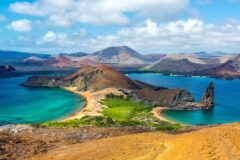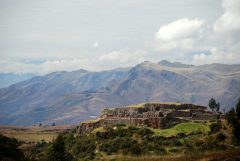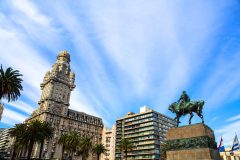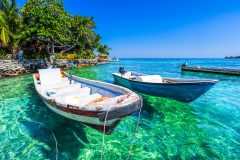

Bolivia FAQs
When's the best time to visit Bolivia?
The weather can be a critical factor: the altiplano highlands look their best in the sunlight Apr-Oct, in Dec-Jan it can be dull and chilly at this altitude (3,500-3,800m). The lowlands of the east are hot and humid all year around.
For more detailed information visit our When To Go section.
What's the official language of Bolivia?
Spanish is the official language of Bolivia.
What is the national currency of Bolivia?
Peso Boliviano is the national currency of Bolivia. Notes in local currency (and in some cases US dollars), can be withdrawn from ubiquitous ATMs in principal cities and some smaller towns; there are many money exchanges (casas de cambio) and banks which exchange US dollars (a few accept euros or sterling but the rate may be poor).
When withdrawing money from an ATM using a debit card, you are offered a choice of account type from which to make your withdrawal: select 'Credit Card' (ie NOT Current account or Savings Account options).
What's the time difference between Bolivia and UK?
The time difference between Bolivia and the UK is GMT -4 hrs.
Do I need a visa for Bolivia?
Holders of a full British passport do not require a visa, although passports must be valid for at least 6 months after the trip begins. Anyone with a different nationality should enquire with us or check with the relevant consulate.
If flying to the US, or via the US you will need to fill in your online ESTA application.
What vaccinations do I need for Bolivia?
Please check Travel Health Pro for information on health recommendations and vaccinations for the destinations you are visiting. Please note that many Latin American countries require proof of vaccination against Yellow Fever if you have recently travelled to another country where Yellow Fever is present.
What countries combine well with Bolivia?
If you’re planning a trip to South America there are some perfect destinations to combine with a holiday in Bolivia. Try a visit to Peru via Lake Titicaca, 122 km and a couple of hours' drive from La Paz; or even a holiday in Chile, entering the country via the dazzling salt lakes of Uyuni.
What are the festivals, cultural and sporting events in Bolivia?
The key festivals and cultural events in Bolivia are:
Gran Poder: La Paz, Late May/early Jun annually: processions of groups of indigenous dancers in costume, with historical and cultural themes.
Carnival: Oruro, La Diablada, Feb-Mar: One of the most eye-catching on the continent, with parades of people in elaborate costumes.
How do I adapt to the altitude in Bolivia?
Much of Bolivia is occupied by stunning high Andean terrain, with La Paz at 3,500m.
Travel to high altitude can cause mountain sickness and even if you feel fighting fit it’s important to take things easy and stay hydrated (drink plenty of water, avoiding alcohol and caffeine) as you get used to the thin, dry air.
You may initially notice a headache, dizziness or breathlessness and this usually improves with acclimatisation. If you are pregnant or taking the contraceptive pill, have a medical condition such as heart or lung condition, anaemia, asthma, high blood pressure you should seek the advice of your GP before booking.
We also recommend you check your travel insurance covers travel to high altitude. If you’re taking the family, remember small children may be less capable of communicating altitude-related symptoms effectively: keep an eye on them too. Rest assured we will plan your itinerary carefully, taking into account any time spent at altitude. If you have any questions or concerns about altitude please speak to your travel expert.
Further advice on travel to altitude is available on www.travelhealthpro.org.uk.
If you still have questions, please contact us and one of our Travel Experts will be happy to help.
If you still have questions, please contact us and one of our Travel Experts will be happy to help.
Papagaio
Your edit for Latin American inspiration
Our exciting range of articles on Latin America explore everything from iconic destinations and lesser-known cultural gems to delicious traditional recipes. You’ll also find exclusive travel tips, first-hand client reviews and the chance to get your personal questions answered by our travel experts.
View Extraordinary Inspiration






































